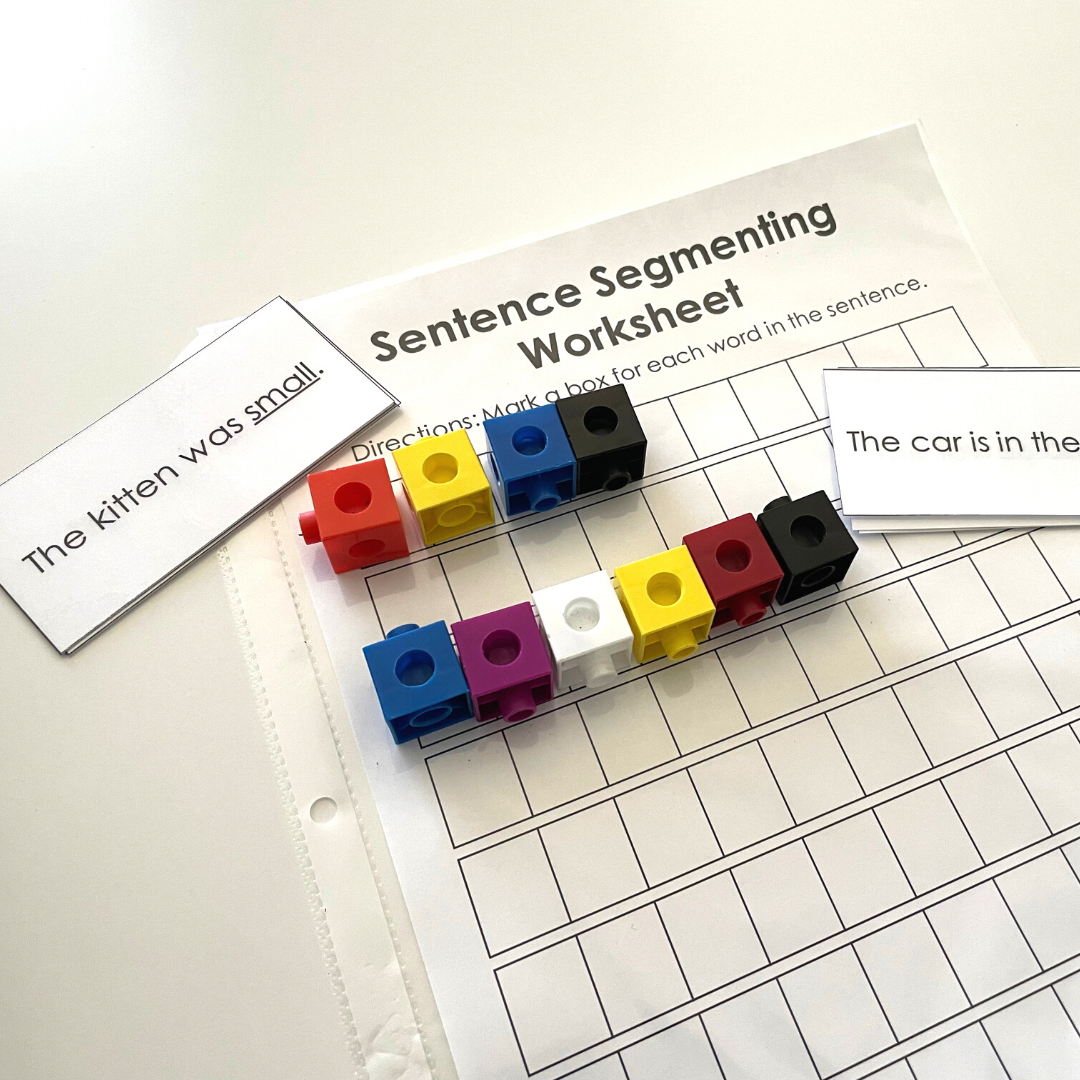Should I Teach Sentence Segmenting?
Phonological awareness skills are often taught to support reading and spelling.
But…did you know that some PA skills can directly support reading comprehension as well?
Wait, what?
It’s true! One of the first skills we work on with students is sentence segmenting. Breaking sentences into individual words may seem super simple, but it’s not. Have you ever heard someone speaking a different language? It is difficult to know where one word ends and another begins! This same thing can happen with students learning to read and write. It is important that students know how to do this because…
Sentence segmenting helps students with higher-level reading and writing skills.
At a basic level, it helps us know where to put spaces in our sentences. Imagine trying to write a sentence if you couldn’t tell where one word ended and the others began.
At a deeper level, sentence segmenting requires a great deal of working memory. In order to support students’ ability to hold onto sentences in memory, it is important to teach them to break down sentences.
When we break sentences down, we want to break them into…
a subject (who/what),
a predicate (did what),
and an adverbial phrase (why, when, where, or how).
This simple strategy will help…
improve short-term working memory
understand sentence structure
build listening & reading comprehension
improve written sentence structure
When students can hold onto the key information in a sentence, it helps them understand it.
Students need to be able to segment sentences for both writing AND comprehension.
Check out our 5-Core Components of Literacy Activity Library to grab your own sentence-segmenting resources (and unlock hundreds of other literacy resources)!
Now, as we will mention again and again, PA activities should be quick. They are like "warm-ups" for our brains before reading or spelling. This should not be a focus for an entire lesson as there are definitely additional valuable skills you need to make sure to fit in. If you're interested in learning more about how to fit it all in - you can check out our blog >>here<<.


